
We do everything on our phones these days, from shopping to browsing social media and managing our businesses.
This is why it’s more important than ever to optimize the user experience to keep people on your app for longer periods, enjoying it more, and sharing it with friends.
If you’re trying to optimize your mobile app, I’m sure you’ve already tinkered with the layout, fonts, copy, and more, but there’s one thing you probably haven’t: mobile deep linking.
It’s a small detail that can drastically enhance how users engage with your app but few are taking advantage of it.
That’s why I’m going to teach you what mobile deep linking is, why you need it, and how you can implement it yourself.
Let’s dive in.
What is Mobile Deep Linking, Anyways?
Mobile deep linking is the practice of funneling users deeper into your app by using a uniform resource identifier, or URI for short.
This allows mobile app developers to push to a specific page within an application, versus simply opening it.
They are similar to a URL, but a bit more detailed.
Consider this — If you were trying to sell a product, would you want users to land on your homepage or a sales page deeper in your website?
The latter, of course.
By helping users go to a specific page within an app, you improve the customer journey by getting them closer to the end goal sooner.
Here’s a visual of what the process looks like:
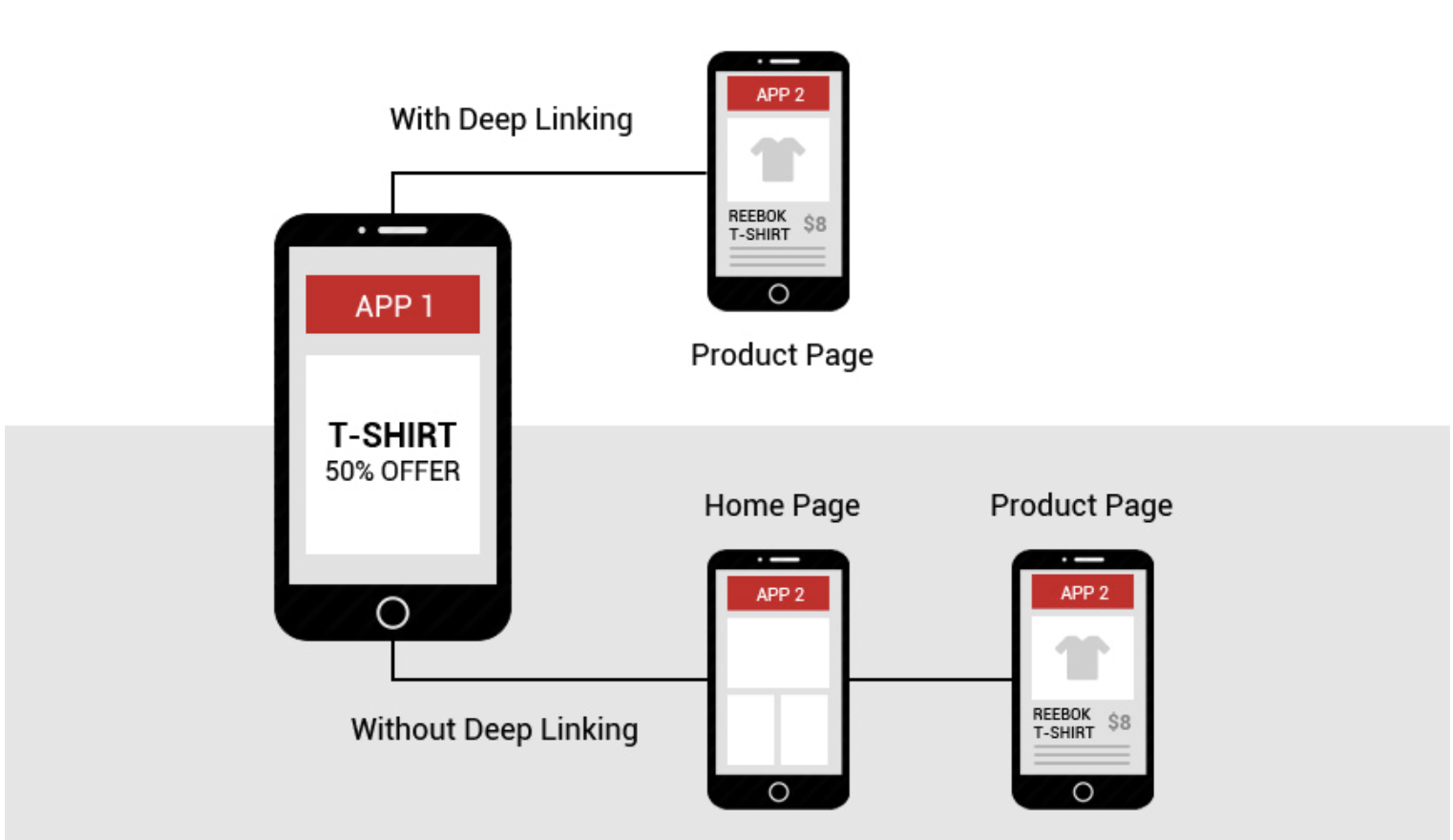
Mobile linking comes in three different forms you need to be aware of. These include:
Standard Mobile Deep Linking
This is a straightforward deep link that forwards a user to a specific part of the app. It’s also known as universal linking.
These links only work if the customer already has your app installed.
The problem is with traditional linking is when a user clicks a link, it won’t open the mobile app, but instead directs them to the browser version.
If someone is on a mobile device, the app version will always be more optimized and streamlined.
If you search for my Instagram on Google, for example, with the app installed, here’s what happens.
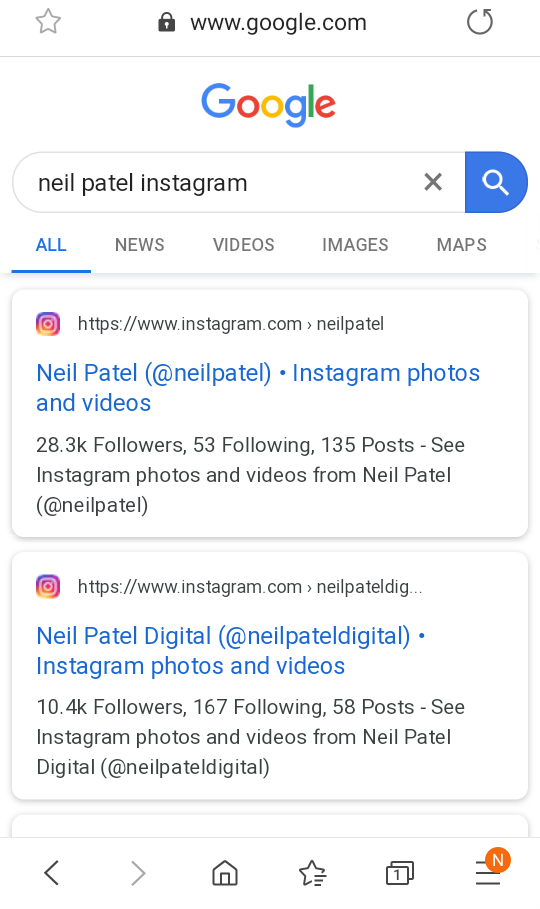
The results appear to be the same whether you have the Instagram app or not, but clicking it opens up the app seamlessly.
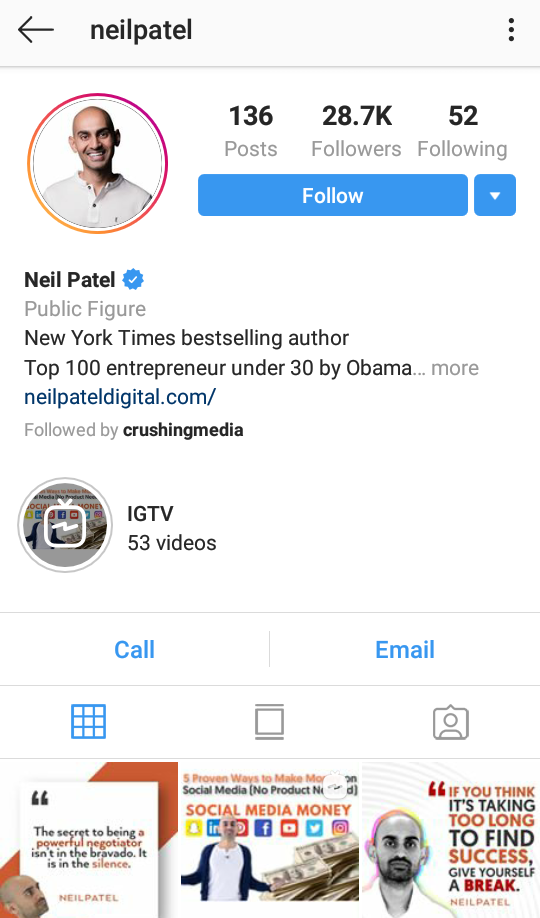
This is an excellent example of basic deep linking.
Someone that doesn’t have the Instagram mobile application installed will be given an error or redirected to a fallback page.
Deferred Mobile Deep Linking
This form of deep linking works the same way as standard linking, except it directs users without the app to download it.
This can help app developers, and companies acquire more customers.
Once the app is installed, the user is referred to the original location.
Check out the Skip The Dishes app to see what I mean.
While a user is creating their order, they can download the mobile app for Android or iOS.
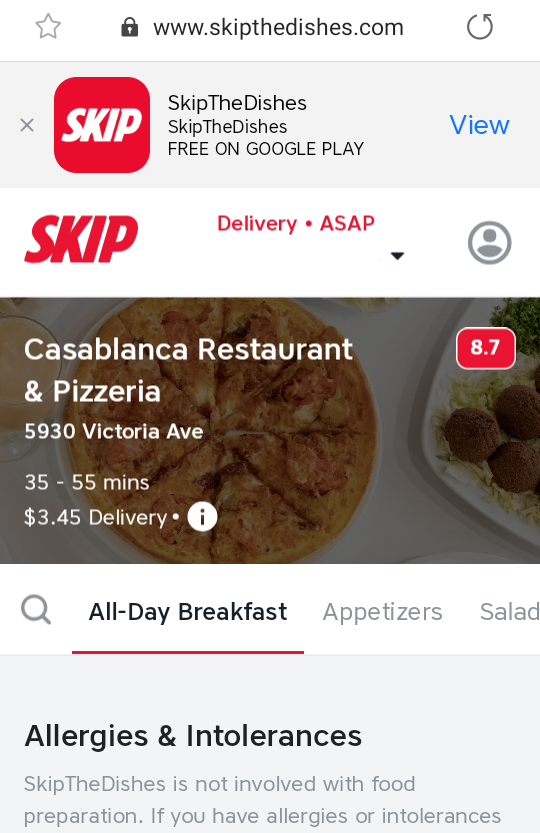
They are sent back to the exact place, except in the mobile app after downloading it.
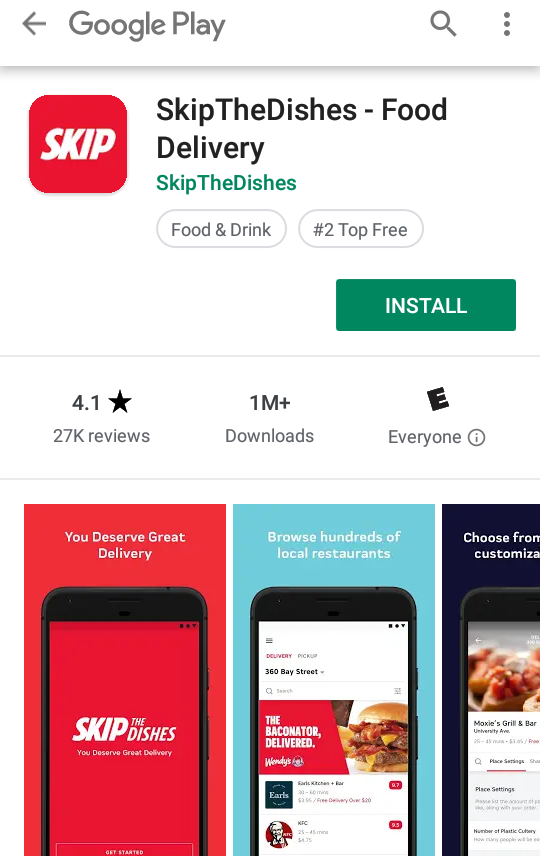
This means that they don’t have to manually go through the entire process again to get back to where they were.
Contextual Mobile Deep Linking
Contextual deep linking, also known as onboarding, is commonly used for gathering information on customers to personalize the user experience of an app.
Data such demographics, how users navigate to the app, and more is recorded.
The app onboarding process can be different depending on if the user installed via the Google Play Store, the Apple Store, a Facebook campaign, or another source.
For example, a mobile app downloaded through a Facebook Ad might look different than when it’s downloaded through a Google Display Ad.
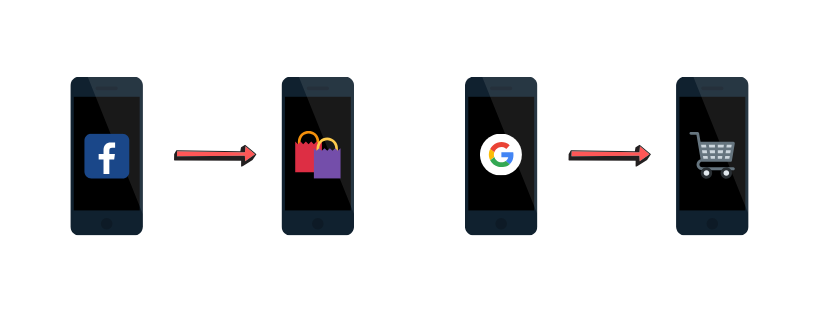
The landing page can be customized through what is known as a deep view in mobile app development.
Just as the deep link forwards users to a specific deeper page in the application, the deep view is the visual result they see that’s different than others.
What Are URI Schemes and How Do They Impact Mobile Deep Linking?
Deep linking uses what are known as URI schemes. These schemes are similar to how a website URL can direct you to a specific page on a website.
They look something like this:
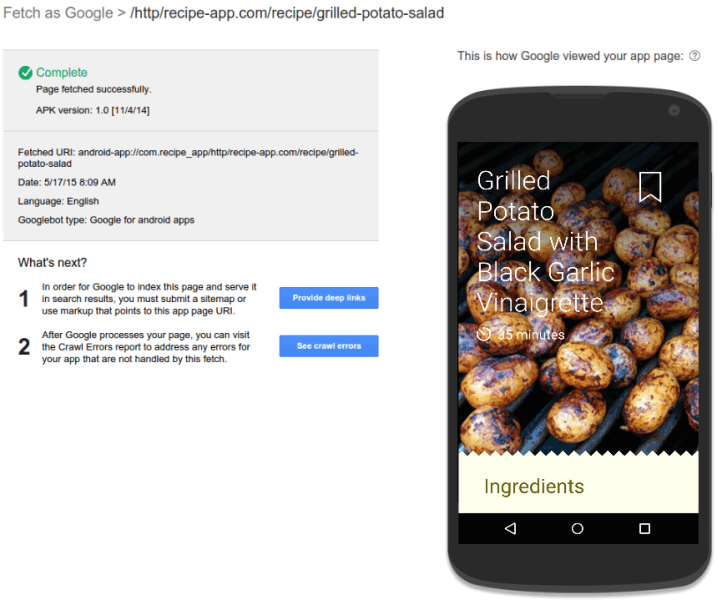
See the fetched URI? Its format is appname://path/to/location.
Custom URIs are simple to set up for developers (Often created by default) and present the opportunity to redirect users wherever you please.
The Mobile Customer Journey and How it Applies to Deep Linking
The mobile buyer’s journey is the individual steps a user takes to find, use, and share your application.
It’s similar to the sales funnel a customer goes through when purchasing a product, with some small differences you need to be aware of.
Here’s how the various steps in the mobile buyer’s journey can be applied to mobile deep linking.
Step 1: Discovery
The first step in the mobile customer journey is discovering your app.
While this can be achieved through content marketing and SEO strategies, deep linking gives these tactics a nice boost.
Google indexes deep links from mobile apps, giving you more opportunities to rank and drive organic traffic.
Users can click the search engine listing and open the link directly through the app instead of an internet browser.
Look at this search for Google Analytics to see what I mean:
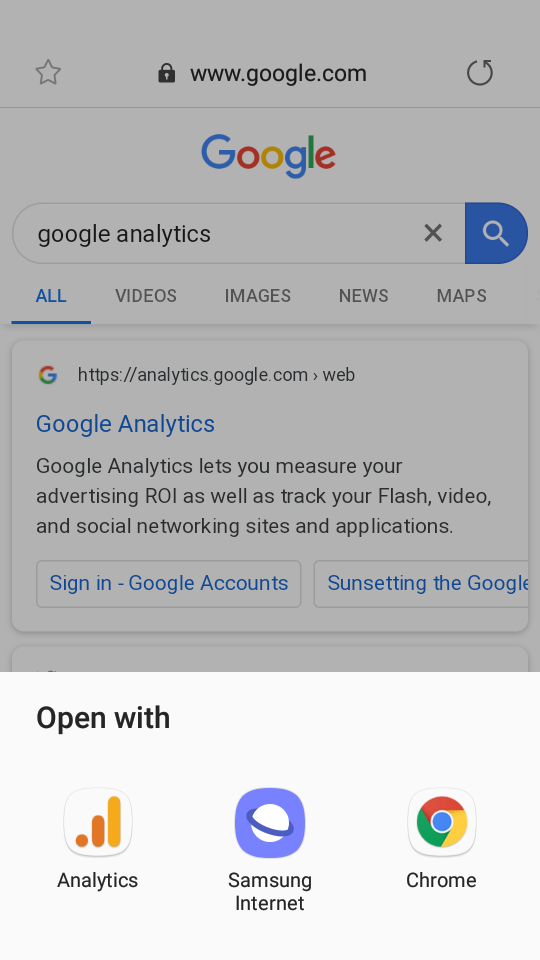
This helps businesses acquire more users and increase brand awareness versus having a single search engine listing.
Check out my video on skyrocketing mobile app organic traffic, and pair it with deep linking for mind-blowing results.
Step 2: Compare
Once a user has narrowed down a few options, they’ll look for their best option by comparing different apps.
They might look at factors like pricing, ease of use, and features.
Deep linking enables you to push users to the best features of your app, reviews, or customize the experience to make your application better than your competitors.
By reducing the steps it takes to get to essential functions of the app, you’re also decreasing the chance of users bouncing.
Step 3: Decision
The third step in the mobile buyer’s journey is making a decision and commitment to a single app.
Having a clear value proposition and refined user experience is crucial here.
Better yet, contextual deep linking helps you collect data to make the application as tailored as possible to your buyer’s persona.
Marketing campaigns can also be optimized with this information to improve targeting and performance.
Step 4: Retain
Once you begin acquiring users, you need to keep them.
Standard and deferred deep linking will help navigate users back to your app on search engines, social media, and other platforms.
This encourages them to use your app more often.
Data collected as a result of deep links will assist you in understanding why and how they use your mobile application.
Doubling down on these is what we call Pareto’s Principle or the 80/20 rule.
This rule states that 80 percent of results come from 20 percent of actions.
In the case of mobile app development, you might discover that users are only engaging with a few features and others are taking up space.
You could use that information to update the most-used features and pages, boosting engagement and retention.
Businesses will miss out on discovers like this if they don’t use deep links to collect information.
Why Mobile Deep Linking Matters
I know what you’re thinking.
“Why should I bother with mobile deep linking?”
Here are a few reasons.
Improve the User Experience
If you can save the user from going through multiple steps instead of one, why wouldn’t you?
That’s exactly what deep linking does, and improves UX because of it.
You’re making the life of users easier by using deep linking to get them where they want to go faster.
This gives them a better experience and impression of your app.
Here’s what the difference between not using mobile deep linking and taking advantage of it looks like:
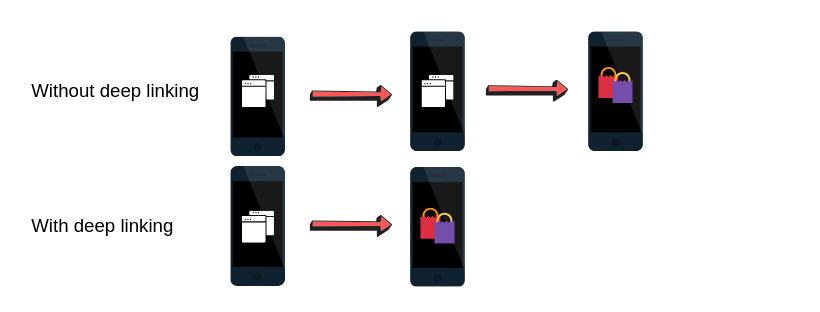
Much simpler, right?
This brings me to my next point.
Increase Retention and Engagement
Wouldn’t it be nice if every user that downloaded your app stay active all year round?
Unfortunately, that’s not how it works.
An estimated 55 percent of users will churn after the first month of use. That means nearly half of the new downloads will be lost.

Look at mobile app user retention the same way you approach website traffic.
It’s common for nearly half of all visitors to leave a website and not take any action.
Do you just sit there and do nothing about it? Of course not!
You implement strategies like email options through popups and exclusive content to capture those users before they leave.
This is precisely what deep linking can help you do on mobile apps.
Once a user has visited your app, you can retarget them and use a different style of deep linking to improve their experience.
Improve the Onboarding Process
When a mobile app uses a form of deep linking like the deferred approach, you can acquire more users.
As a user goes through the mobile browser version of your application, they are given the option or automatically forwarded to the appropriate download location.
The contextual linking technique can be used to onboard new users differently, depending on where they originally downloaded the app.
If you understand that users from a Facebook ad campaign regularly navigate to a specific product category, you can automatically push them there.
Furthermore, perhaps users from Google like to learn more about your business first before purchasing.
You can use contextual deep linking to direct those users to the page detailing your company’s history.
Re-Engage Users
Once a user has used your app, you have a small window of opportunity to retarget them.
Did you know that 46 percent of search engine marketers believe that retargeting is the most underused form of marketing right now?
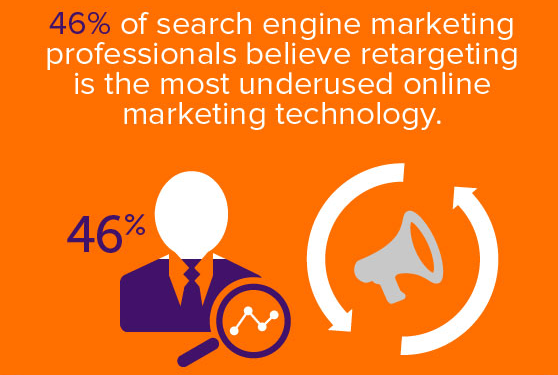
It’s a hidden gem that deep linking enhances.
If a segment of users downloaded your app, viewed product pages, and bounced, you could retarget them in advertising campaigns and use deferred linking to forward them back to the high-interest product pages.
Strengthen Your Marketing
Contextual deep linking allows you to customize the user experience, which improves marketing results.
For example, consider that 39 percent of consumers will spend more money when given a mobile coupon.
You could collect data on users via contextual deep linking to discover what product categories they enjoy the most, then offer a discount based on their browsing behavior.
Similarly, mobile deep linking has the potential to increase conversion rates.
This is because you are pushing users through the sales funnel quicker. Normally this consists of:
- The user lands on the homepage of your website.
- They navigate to a product page and add a line item to their cart.
- They visit the cart page to confirm their order.
- They pay and check out.
Mobile deep linking can effectively cut the sales funnel in half by taking customers straight to sales pages.
Take the ticket mobile app SeatGeek as an example. They were able to increase revenue by 10.6 percent and app open rate by 8.8 percent with deep linking.
Here’s how:
They were struggling to remind users to finish their purchases and buy tickets through the app.
They resolved this issue by using deep-linked mobile ads. These ads were targeted based on past user activity and displayed relevant ads in other apps the customer used.
SeatGeek noticed they were getting thousands of new users per day and had to keep them.
Their team began creating ads based on previous behavior.
For example, a user adds tickets to their favorite basketball team’s game to the cart, but then abandons before checking out.
When this user was on another application that supported ads, they would see an advertisement for that same basketball game.
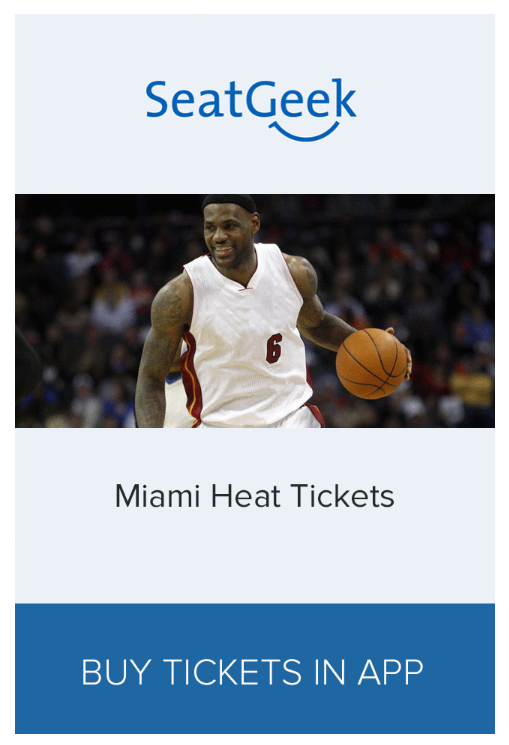
The ads were simple in nature, using a related image, and straight forward call to action.
Boost App Discoverability
Don’t you want to get discovered by more customers?
Of course, you do!
That’s precisely why you need to implement more deep linking in your mobile app.
Deep links are indexed on Google, giving you more opportunities to rank and drive traffic to your business.
Think about how a website like mine ranks for thousands of pages, and not just the homepage.
You can achieve that same performance, but for your mobile app.
Users on search engines like Google can visit deeper functions and features, versus landing on the welcome page.
This creates the opportunity to optimize applications for SEO via keywords, meta descriptions, and title tags.
Provides Analytics and Insight into Campaigns
Mobile deep linking allows you to refine your buyer’s persona and better understand their behavior.
This information can improve the effectiveness of marketing campaigns and the overall experience of your app.
You can also see which links are clicked the most and by whom.
Doing so creates the opportunity to double down on the best-performing links and optimize who you target in advertising campaigns.
Deep links also shine light on which parts of your app are used the most and which aren’t.
Google offers its Firebase product to track deep linking in an easy-to-use platform.
You can begin using it by selecting the Android, iOS, C++, web, or Unity options.
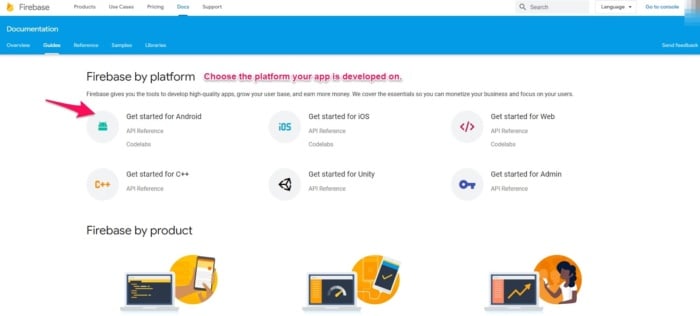
Using Android as an example, you will need to ensure that you meet the prerequisites Google outlines in their documentation.
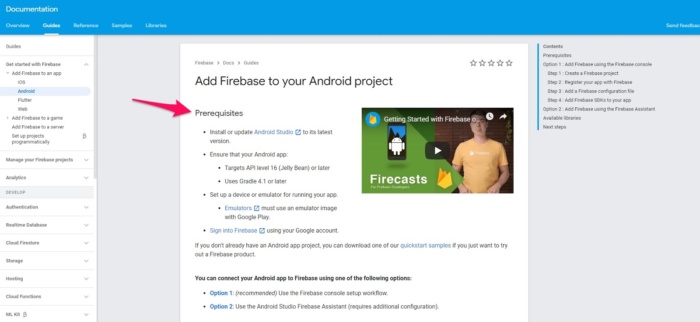
Firebase’s SDK automatically captures various metrics and user properties and creates custom events if you wish to track a specific action.
This data is then relayed through the Firebase dashboard, which has a very familiar look and feel to other Google products.
You will feel right at home if you’ve ever used Google Analytics.
Which, by the way, can be connected to Firebase if you need to add events specific to your business like e-commerce purchases.
How to Add Mobile Deep Linking
Now that you’re excited to start using mobile deep links, here’s how to implement it yourself.
Deep Linking on Android
Android devices will select one of three options when a URI is requested:
- It opens a preselected app with the URI.
- It opens the only available app that can handle the URI.
- The user is prompted to choose an available app.
To begin adding deep links to achieve this, you will need to navigate to the AndroidManifest.xml file of your Android mobile app.
You will then have to add the following elements to the file through an intent filter:
- Specify the ACTION_VIEW attribute in the <action> element.
- <data> tags which include the URI scheme, host, and path.
- CATEGORY_DEFAULT and CATEGORY_BROWSABLE attributes to move users from a browser to your app.
Here’s an example from Android’s official documentation on deep linking of what the code will look like:
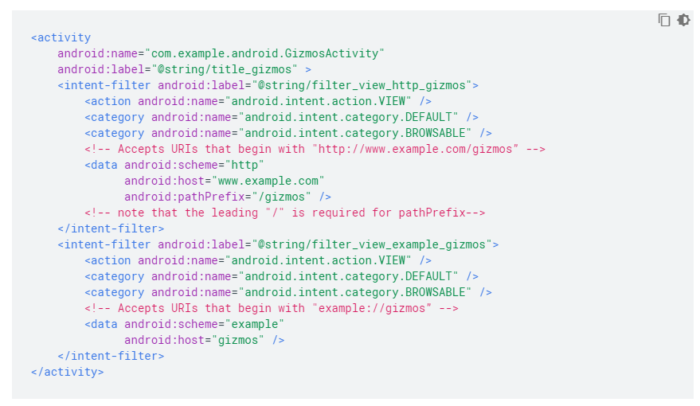
The second step is to ensure that your app can read data from the intent filter you created.
This is achieved through adding getData() and getAction() methods like so:
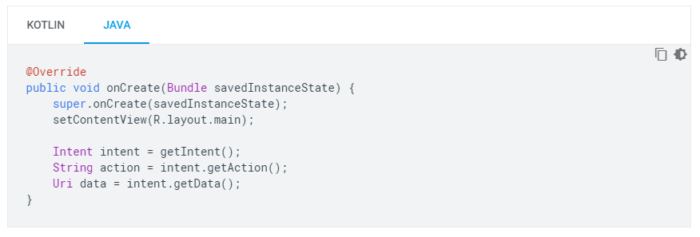
Deep links should not require users to log in or perform other actions to visit the desired content unless desired, like promoting app downloads through deferred linking.
iOS
To add deep links for Apple, you’ll need to use what Apple calls Universal Links.
To build apps that allow deep linking, you’ll need to download Xcode here.
To support universal links on your app and website, follow these steps:
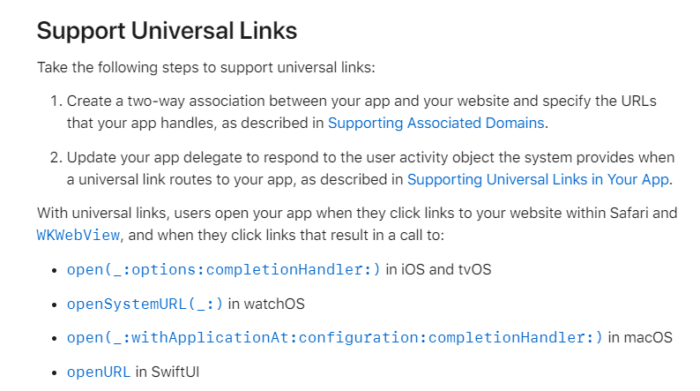
Mobile Deep Linking Frequently Asked Questions
What is mobile deep linking?
Mobile deep linking allows you to link to specific pages, features, or content inside an app, rather than just to the app home page.
What are the different types of mobile deep linking?
The three types of mobile deep linking are standard, deferred, and contextual. It’s important to understand each of these to know when to use them properly.
Standard deep linking is used when customers already have an app installed. When they click on a mobile link, it will allow them to open it in the app or automatically.
Deferred deep linking works by forwarding users to the appropriate app store to download the app if they don’t have it, then pushing them to the originally intended page.
Contextual linking is the most complicated but allows developers to collect information on users to customize the onboarding and overall experience of the app.
What are the benefits of mobile deep linking?
Mobile deep linking can improve UX, reduce churn, increase engagement, and make it easier to market your app.
Mobile Deep Linking Conclusion
Mobile deep linking is a powerful technique that improves user experience, onboarding, and marketing of applications.
Mobile deep linking can be implemented in each step of the buyer’s journey to acquire and retain users, making it a crucial addition to a strong app marketing strategy.
How do you use deep linking to improve mobile app performance?
from Blog – Neil Patel https://ift.tt/2Mn80v1
via IFTTT
No comments:
Post a Comment